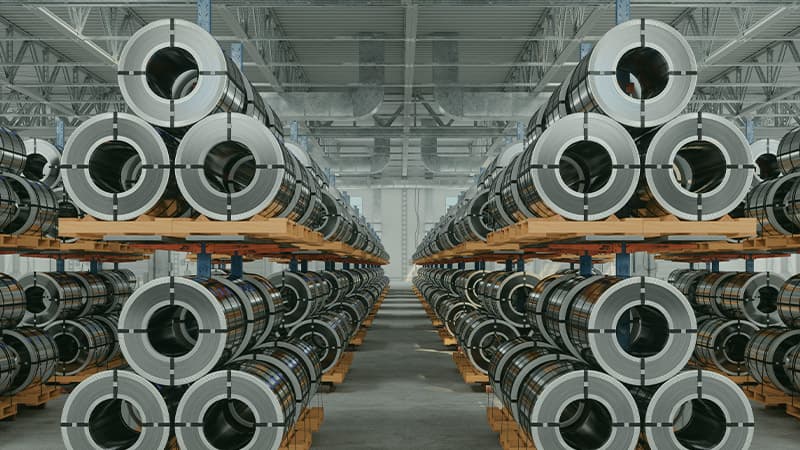Coil Coating Solutions for Designing Unconventional Building Envelopes
October 2024
Coil Coating Solutions for Designing Unconventional Building Envelopes

Modern architecture thrives on innovative materials and technologies to bring imaginative designs to life. Among these, coil coatings have emerged as a game-changer for those looking to make a statement with unconventional building envelopes. In this blog, we'll dive into the realm of coil coating solutions, their benefits, and how they're revolutionizing contemporary building designs.
What are coil coatings?
Coil coatings are a continuous, automated process for coating metal coils (usually made of steel or aluminium) before fabrication. These precoated metals are then used to manufacture building components, especially for exterior building envelopes. The process ensures a uniform and high-quality finish that's both functional and aesthetically appealing.
Benefits of using coil coatings
- Durability: Precoated metal offers excellent longevity, with resistance to chipping, peeling, UV rays, and corrosion.
- Sustainability: Coil coating processes use less energy, produce fewer emissions, and generate less waste than post-paint operations.
- Versatility: A wide range of colors, finishes, and patterns are available, making it suitable for various architectural styles.
- Cost-effective: Precoated metals typically require less maintenance and have a longer life span, leading to cost savings over the building's life cycle.
Unconventional design possibilities with coil coatings
The real magic lies in the design potential that coil coatings bring to the table. Here are a few ways they're making waves in unconventional building envelope designs:
- Bold aesthetics: From shimmering metallics to vibrant hues, designers can bring their boldest visions to life. Gone are the days of muted, monochromatic exteriors. Today's buildings shine, reflect, and even change color based on the viewing angle.
- Patterned facades: Advanced printing technologies allow for intricate patterns, whether they're geometric designs, faux finishes, or even realistic depictions like wood or stone. This flexibility empowers architects to design facades that are both functional and artistically striking.
- 3D textured surfaces: Coil coatings aren't limited to flat surfaces. They can be applied to metals that are later formed into textured or 3D panels. This creates an added layer of depth and dynamism, pushing the boundaries of traditional building envelopes.
- Responsive envelopes: Innovations are underway in developing coil coatings that respond to environmental factors. Imagine a building that changes its appearance based on the weather, temperature, or even air quality.
- Integration with other systems: Precoated metals can be seamlessly integrated with other building systems, including green walls, photovoltaic panels, or smart facades. This melding of form and function is setting new standards for sustainable and intelligent architecture.
As the world of architecture continuously evolves, the need for materials and technologies that can keep pace becomes paramount. Coil coatings are proving to be more than just a trend; they're a durable, versatile, and aesthetically versatile solution for the modern architect's toolkit. By embracing these innovative coating solutions, we can look forward to a future where our buildings are not only functional shelters but also works of art that inspire and amaze.
For clients who recognize the immense potential of unconventional building envelopes and are seeking to integrate such cutting-edge technologies into their projects, finding the right talent becomes crucial. LVI Associates, with their deep-rooted expertise in the building envelope sector, can connect you with top professionals who understand and can harness the power of coil coating solutions. Don't let your projects be ordinary; ensure they stand out with the best talent in the field. Request a call back from LVI Associates below, and let us be your bridge to the future of architecture.
